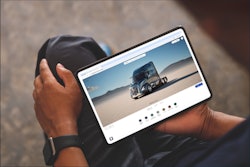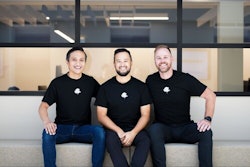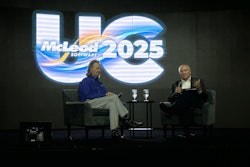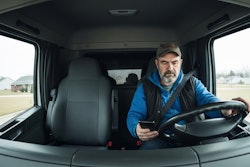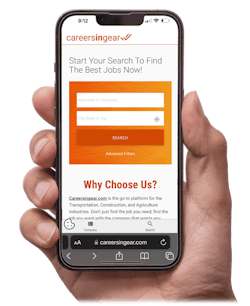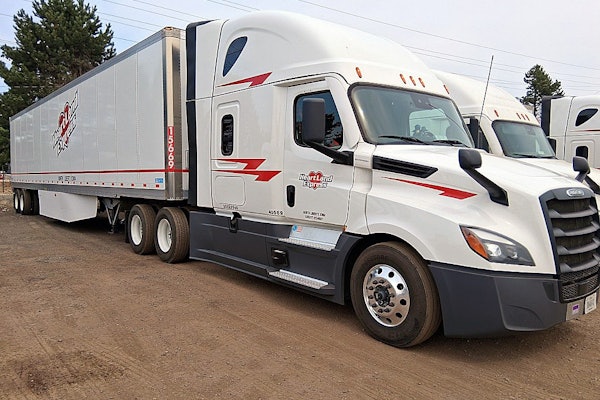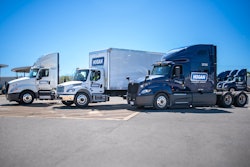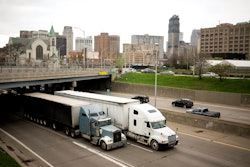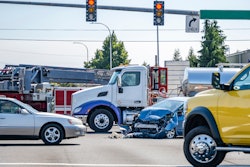Dash cameras may seem like a newer technology in trucking as many fleets have yet to install them for a number of reasons. But they’ve been around for a while now, going from a simple forward-facing video recording to help exonerate a company in the event of an accident, to driver-facing cameras to help companies coach their drivers. Providers have added artificial intelligence to the mix in more recent years to detect and prevent risk in real-time.
That focus has shifted yet again – beyond the moment to a foretelling of driver action and events.
Dash cam providers are now focusing on predicting accidents before they happen by combining a variety of data, from telematics and weather to driver history and cognitive performance, among other factors.
The goal is near-zero accidents.
Almost nine out of 10 accidents are caused by human error, said Johan Land, senior vice president of product and engineering and safety and AI at Samsara.
“(AI) is really about addressing that 90% and trying to prevent it. I think with better AI that's the direction this is heading: not completely eliminating accidents because some of them will be random but almost eliminating all of those that are due to human error,” Land said. “This would have an enormous effect on society. It would also dwarf all kinds of other safety technology and the impact they've had – things like seatbelts or airbags or ABS brakes. They are much smaller than the potential of AI.”
How AI detects future risk
Land said his team at Samsara studies humans – specifically drivers – all day, observing patterns to calculate their risk of causing an accident.
Samsara combines an “enormous amount of data,” including driver behavioral patterns, risk events, time with the company, time of day the driver is typically on the road, training and coaching history and more. The vendor also looks at other factors like weather and telematics data, following distance and speed, driver fatigue or distraction, among other things, to build a model that assesses risk in a predictive way so fleets can plan and coach.
Lytx also uses advanced AI to address driving risks inside and outside the vehicle. Like Samsara, Lytx detects things like fatigue and distraction, such as cellphone use or eating, inside the vehicle. Outside the vehicle, Lytx uses AI and machine vision to analyze factors like following distance, leveraging video data along with inputs from the engine, GPS and accelerometer built into its camera.
All models operate in real time, providing in-cab alerts to drivers and generating events that send video and associated data to the cloud for company review.
Brendon Hill, senior vice president of product at Lytx, said the vendor recently introduced a new capability called Dynamic Risk. It incorporates contextual factors into risk assessment, starting with weather conditions like snow, wet roads and low visibility. The company will expand to include elements like pedestrian proximity, construction zones and road gradient, he said.
“This enables customers to take a more holistic, situation-specific view of risk, improving safety outcomes across diverse driving environments,” Hill said.
Though he said Lytx is currently focused on real-time risk detection, it is collaborating with others in the industry to work toward predictive measures.
“Various approaches exist, including looking holistically at driver work schedules and other measurable contextual factors,” he said. “Other approaches include evaluating cognitive performance before and during a shift. We are excited to see this space grow.”
Nauto is a vendor that is growing its predictive model.
Its approach is called Predictive Fusion AI. The predictive element refers to a look into the future based on past and present factors. Fusion refers to looking at all risks – inside and outside the cab – combined.
[RELATED: Avoid the pitfalls of AI in safety]
What’s happening outside the vehicle? Is the light changing? Is there a stop sign coming up? Is the vehicle ahead braking? Is there a pedestrian crossing? What’s happening inside the vehicle? How fast is the driver driving? Is the driver alert? Has the driver already spotted the hazard and taken proactive measures, or is the driver looking elsewhere?
“It allows us to anticipate risky combination situations with enough time to let the driver fix it,” said Nauto CEO Stefan Heck. “That's been a real game changer. Through that, we've been able to reduce pedestrian bike collisions by 80% (and) collisions overall, we reduced by about 65%.”
This progress is because Nauto’s AI is connected to a bunch of different sensors. The system uses data from the on-baord diagnostics port and the CANbus port, cameras and inertial sensors.
Nauto has taken things a step farther, looking at this data over time and using AI to make predictions based on billions of miles of driving.
Its model is called SAFER (situational assessment fusing exponential risks).
“What it's doing is saying, ‘I’ve got all these different risk factors. Are they coming together in a way that's getting worse or getting better, and if they're getting worse, based on the patterns I've seen before, is this likely to lead to a collision?” Heck said. “Part of what the AI is doing there is really looking at how is this evolving over time, and are the actions the driver has already taken making it better or making it worse, and then you can intervene based on that.”
There are three levels. The first level provides real-time feedback, warnings and coaching for drivers. Heck said about 85% of drivers take advantage of that and improve their driving. The second level occurs if there is a collision. Nauto provides immediate notice of the collision alongside proof points that could exonerate the driver. He said the vast majority of collisions involving Nauto users are now the fault of the other party, but using Nauto has also resulted in a reduction of collisions caused by the other party as well because the system has helped drivers predict risk and prevent accidents at the hands of someone else. The third level is where the fleet manager receives and overall picture of their risk, and they can even narrow it down by driver or based on state, city or operation center.
Predicting the future
You might think it’s impossible to go beyond predicting the future, but the next step is solving for those future problems.
Heck said trucks will soon have AI tied to their active safety systems so it can proactively react on their behalf. Such measures could look like an automatic tightening of a seatbelt or pre-triggering the brakes when AI predicts a possible crash.
[RELATED: Dash cameras and telematics are not mutually exclusive in insurance]
In addition, there are more analytics and threat detection that can be run, and AI still needs to improve more. That, Heck said, is all about more sensors, and he thinks lidar will be cheap enough in the near future to add sensors everywhere.
He said he thinks intelligence systems will migrate directly into the vehicle in the next five years, whereas today most companies are still buying add-ons.
As these improvements are made, Heck said accident statistics will improve, too.
“Today the industry average is about 20% loss reduction, and we're getting about 65%. There's a long way to go to get to 95%, 98%,” he said. “I personally don't believe anything will get to 100% because there just are really rare freak combinations that you just won't be able to avoid, but we can definitely get into the high 90s.”


